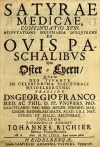One-hundred-fifty years ago, a German scholar complained that the Easter bunny was “inexplicable.” It remains so today. The egg-delivering hare has no obvious religious meaning nor clear connection to the holiday. It looks, in some ways, like an ancient myth that has been Christianized, but there is no known myth or fable that gave birth to this pesky rabbit.
And the true story, in fact, may not clear up much befuddlement. The Easter bunny was invented bit by bit and all at once, as people adopted, adapted, invented, and recreated pieces of an odd folk tradition to suit their celebrations.
Here are the tracks, such as they are, that the Easter bunny has left in our history:

692 – A church council in Constantinople, attempting to ensure religious practices are consistent across Christendom, prohibits eating dairy and eggs during Lent. Since boiled eggs keep longer, they become part of Easter celebrations.
1290 – English King Edward I orders 450 eggs decorated with dye and gold leaf to be given as gifts to the royal household on Easter.
1530 – Madonna of the Rabbit is painted by Titian, depicting the Virgin Mary with her hand on a white rabbit. Some believed the animal had the power to reproduce asexually.
1569 – A Dutch satire critiquing “Romish religion” lists decorated eggs as one of the ridiculous practices of the Catholic Church, along with candles, icons, palm branches, ashes, various hats, and vestments.
1572 – A Catholic priest is tied to a cross in Edinburgh and pelted with eggs. Reformer John Knox writes about it, putting down the first known use of the English phrase Easter eggs.

1682 – Physician Georg Franck von Franckenau describes children in the Heidelberg area hunting for “hare’s eggs” in herb gardens. It is the first known description of an Easter egg hunt.
1725 – In France, Louis XIV has a chocolate egg made to celebrate the end of the Lenten fast.
1800 – Johann Conrad Gilbert, a German artist in Pennsylvania, paints an Easter rabbit—the first known depiction in America.
1819 – Princess Victoria of Saxe-Coburg-Saalfeld, mother of the future Queen Victoria, moves from Germany to England and takes with her the tradition of Easter egg hunts.
1835 – Jacob Grimm, of Brothers Grimm fame, speculates without evidence about a possible connection between the Easter hare and an ancient pagan goddess.

1848 – The failure of a revolution leads to mass migration from Germany to the US. A few years later, “Easter hare” and “Easter rabbit” appear in print in America.
1874 – German philologist Adolf Holtzmann writes, “The Easter hare is inexplicable to me.” He imagines there could be a connection to a pagan goddess.
1874 – In England, an Anglican priest pays young men 100 eggs if they can kill a hare before 10 a.m. on Easter Monday.
1875 – Cadbury Chocolate starts to manufacture chocolate eggs for Easter in England.
1878 – President Rutherford B. Hayes invites children to roll Easter eggs at the White House after Congress forbids all playing on Capitol Hill, starting a long-running tradition.
1883 – German folklorist K. A. Oberle speculates the Easter hare tradition may have come from a myth about a pagan goddess turning a bird into a rabbit. He has no evidence such a myth ever existed.
1900 – A Michigan newspaper claims the story of a pagan goddess who turned a bird into a rabbit is “one of the oldest in mythology.” Others repeat the claim in stories about the “Easter bunny,” though there is no such ancient myth.
1903 – British retailers sell wooden eggs with toys inside for Easter.
1910 – A German newspaper notes the northern tradition of an Easter fox is dying out, replaced by the more popular Easter hare from the south.
1950 – A Pennsylvania department store sets up a photo booth where children can have their picture taken with the “Famous Easter Bunny” for $1. In Nashville, a department store sponsors a parade with the “Real Easter Bunny.”
1951 – An Easter bunny song, “Here Comes Peter Cottontail,” sung by Gene Autry, hits No. 3 on the Billboard charts in the US.












